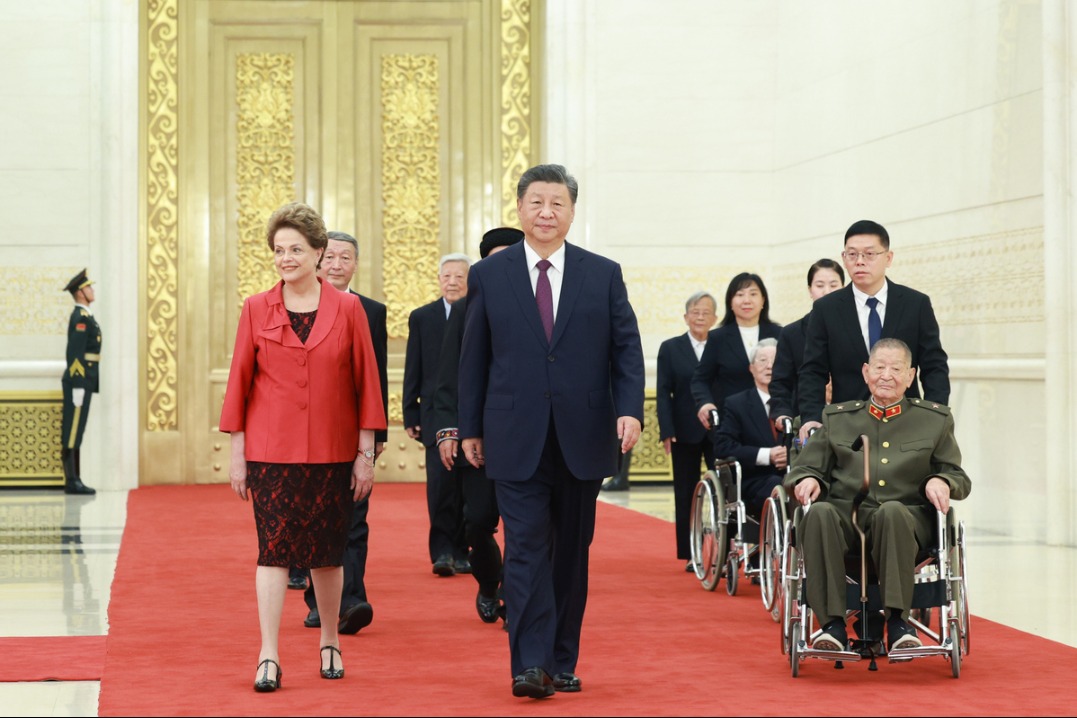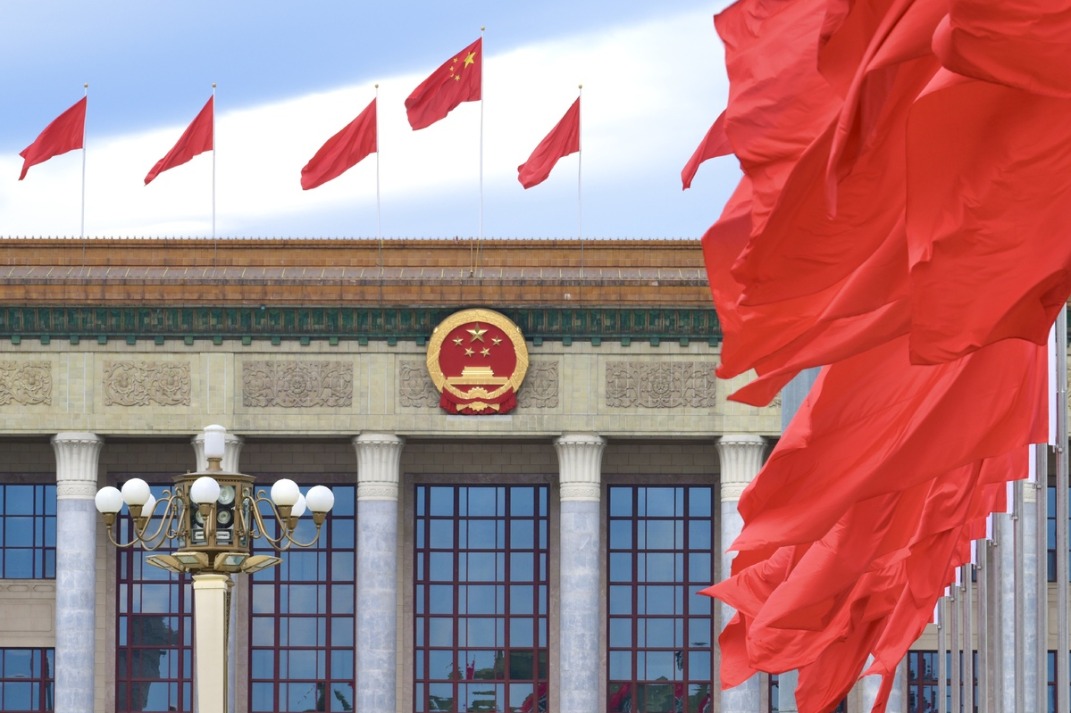What's behind Vietnam's maritime militia construction?
By Ding Duo | chinadaily.com.cn | Updated: 2022-01-07 10:28

According to foreign media reports, 400-ton steel militia-armed fishing boats built in batches by the Song Thu Group Shipyard in Da Nang, Vietnam have been launched and started trial voyages. Vietnam's massive construction of maritime militia ships has aroused the attention of neighboring countries in the South China Sea and international public opinion.
Compared with the traditional small wooden fishing boats in Vietnam and the iron-hull fishing boats built by Vietnamese fishermen with government subsidies since 2014, these steel militia ships are well manufactured and equipped. They have been specially strengthened in their hull structure and are equipped with water cannons and heavy machine gun mounts. Some high-level ship types also have a bow thruster, which makes steering of the vessels more flexible. Obviously, ordinary fishing boats do not need such equipment, and their main purpose is to be used for maritime confrontation.
Fishermen from China, Malaysia and Indonesia have reported they have been robbed and threatened by foreign fishing boats in SCS waters in recent years. More than a dozen young crew members on these abnormal fishing boats can speak fluent Vietnamese, and they are also equipped with light weapons such as pistols and submachine guns. Judging from the descriptions of fishermen from other countries, these armed fishing boats are most likely Vietnam maritime militias.
For more than a decade, Vietnam has expended huge manpower and material resources in developing maritime militia. The maritime militia acts as the eyes of the Vietnamese navy and maritime police and even participates in maritime confrontations, not only squeezing space for Chinese fishing vessels, but also directly threatening the operation and navigation safety of Chinese fishing and law enforcement vessels.
In January 2007, the Ministry of National Defense of Vietnam issued Directive 04/CT-BQP on "Guidelines for Strengthening the Construction of Maritime Militia Self-Defense Forces", and the Vietnam General Staff Department also formulated relevant plans and rules for implementation.
In November 2009, the National Assembly of Vietnam passed the "Militia Self-Defense Forces Act" with a support rate of 89 percent. According to the law, Vietnamese fishing boats must be accompanied by a group of militiamen when they go to the far seas to fish. This marks the official formation of Vietnam's Maritime Militia Self-Defense Force, which has been quietly operating for many years, and it also means the Vietnamese militia has rushed to the forefront of maritime disputes.
To expand the scale of its maritime militia, the Vietnam government issued Resolution No. 67 in 2014, deciding to subsidize companies and individuals who build and purchase large iron-hull fishing boats so fishermen can get large militia ships equipped with naval rams at low prices.
In July 2018, the Ministry of National Defense of Vietnam submitted a proposal for "Building a Standing Maritime Militia Sea Force to Defend National Island Sovereignty under the New Situation", clearly prioritizing the construction of a standing maritime militia sea team in the six coastal provinces of Vietnam then gradually expanding it to the whole country. The Ministry of National Defense of Vietnam issued instructions to the General Administration of Defense Industry, the Z189 military factory under the Navy and six other military-industrial units to build the first batch of maritime militia ships.
In late November 2019, the Vietnamese military announced its plan to "manage the maritime militia". In the first phase (2019-2022), Vietnam will build 126 militia fishing boats equipped with maritime militia from 14 coastal provinces and cities. In the past three years, the Z189 shipyard in Haiphong, the Ba Son Shipyard in Ho Chi Minh City and the Song Thu Group Shipyard in Da Nang have all built armed fishing vessels in batches. At the end of 2021, the TK1482 steel armed fishing vessels produced by the three shipyards for 14 coastal areas in Vietnam have been declared completed.
These ships are designed and built in reference to the TK-1482 class patrol vessel currently used by Vietnam's maritime law enforcement. The measurements of the militia vessel are 42 meters in length, 8 meters in width, 3.75 meters in freeboard height, a speed of 18 knots per hour, standard displacement of 390 tons and a full load of 430 tons.
From the point of view of design indicators, these militia vessels with good anti-collision and sinking resistance have long-term endurance at sea, which can greatly increase the range of the duty, tracking, surveillance and confrontation capabilities of the Vietnamese maritime militia.
Judging from the photos disclosed by the media, each ship is equipped with a huge naval ram at the front, two water cannons and can carry Russian-made KVP 14.5 mm machine guns at the front and rear. The armor-piercing projectile fired by this armed fishing boat can easily penetrate the steel plates of small and medium-sized maritime police ships from other countries within 500 meters.
Vietnam believes the guerrilla tactics adopted by its maritime militia can offset the advantages of Chinese law enforcement ships in terms of size and technology. Some analysts point out even if a militia boat is captured, the Vietnamese side has nothing to fear since the economic cost it pays is limited but it may benefit in diplomacy, politics and international public opinion.
There is no doubt Vietnam's large-scale construction of militia ships is for the purpose of maritime confrontation, which will further complicate disputes in the South China Sea and pose a huge risk to normal fishery production and the safety of navigation in the South China Sea. On one hand, Vietnam has developed its own maritime militia force in a low-key manner. On the other, it has made high-profile statements about the Chinese maritime militia on various international platforms. Obviously, Vietnam is trying to deceive the sympathy of the international community with this double standard approach.
The disputes in the South China Sea are complex and difficult to resolve in a short period of time. Parties to the dispute, including Vietnam, should promote maritime cooperation to mediate differences rather than intensify conflicts through unilateral action. Only in this way can peace and stability in the South China Sea be achieved.
The author is a deputy director and associate research fellow at the National Institute for South China Sea Studies.
The opinions expressed here are those of the writer and do not necessarily represent the views of China Daily and China Daily website.
If you have a specific expertise and would like to contribute to China Daily, please contact us at opinion@chinadaily.com.cn , and comment@chinadaily.com.cn
























